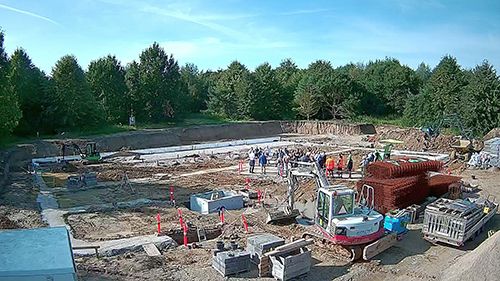Delta Optical Thin Film Celebrates Cornerstone-Laying Ceremony
A cornerstone-laying ceremony took place in August in celebration of Delta Optical Thin Film’s new facilities, located in DTU Science Park in Hørsholm, Denmark. The larger facility became necessary when the company outgrew its current facilities, both in terms of production and office space.
A cornerstone-laying ceremony took place in August in celebration of Delta Optical Thin Film’s new facilities, located in DTU Science Park in Hørsholm, Denmark. The larger facility became necessary when the company outgrew its current facilities, both in terms of production and office space.
Delta Optical cornerstone-laying ceremony

Incorporated in 2014, Delta Optical has expanded its customer base into new territories and new applications such as hyperspectral imaging and laser scanning microscopy. This growth was supported by investments into new coating machines and technologies. The 24,756-square-foot building is custom designed to accommodate the particular needs of manufacturing high-performance optical filters. It includes clean rooms, offices, a canteen, and meeting rooms.
In parallel with the construction of the new building, which will be ready in Autumn 2020, new coating technology will be acquired. “We have been thinking hard about the optimal workflow for our filter production and optimized the layout of the building accordingly,” chief technology officer Henirk Fabricius said in a statement.
Delta Optical Thin Film is a supplier of advanced, high-performance continuously variable filters used in a variety of biomedicinal imaging applications including fluorescence microscopy, hyperspectral imaging, compact spectrometers, monochromators, and micro-plate readers among others. The company also provides single, multiband, laser-line, and broadband band-pass filters, long-pass filters, short-pass filters, dichroic and polarizing beam splitters, and other custom coated optical components.
Best of the Week: Exclusive on Flow Imaging Microscopy, Interview with PNNL Chief Science Officer
April 4th 2025Top articles published this week include several interviews with key opinion leaders on various topics including advanced mass spectrometry (MS) technologies in studying diseases, microplastic detection, and interpreting Raman spectra.
New Multi-Spectroscopic System Enhances Cultural Heritage Analysis
April 2nd 2025A new study published in Talanta introduces SYSPECTRAL, a portable multi-spectroscopic system that can conduct non-invasive, in situ chemical analysis of cultural heritage materials by integrating LIBS, LIF, Raman, and reflectance spectroscopy into a single compact device.